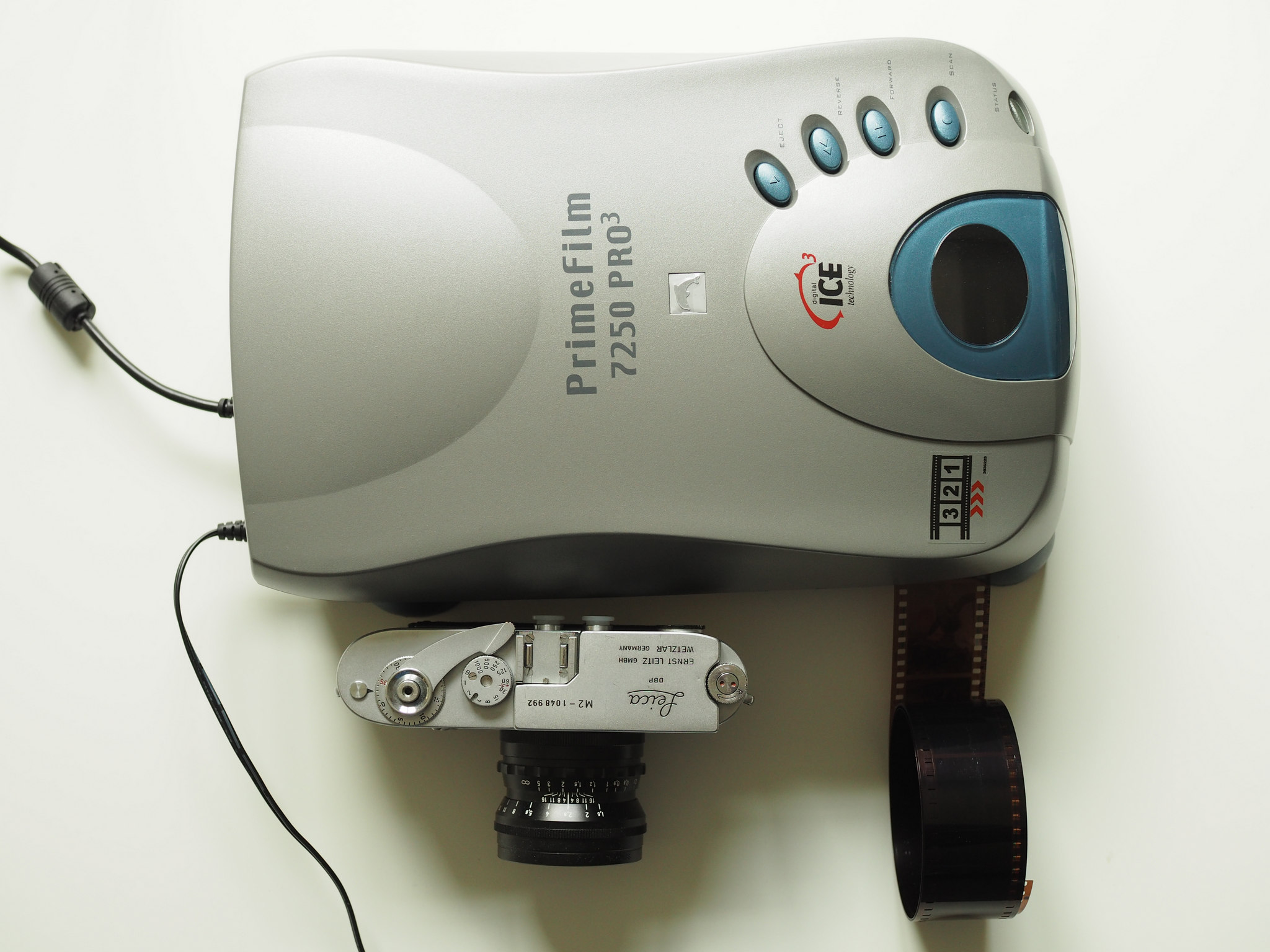It was 1985, 13 years since the OM line of cameras sprung from the fertile soil of Yoshihisa Maitani’s mind. The serious, single-digit OMs (the OM1, 2, 3, 4 and their variants) had been joined by lighter-duty double-digit models (the OM10, 20, and 30). The doubles were lighter, cheaper and less robust than the singles, but they were generally fine. And they looked fine: just slightly parred down, more approachable versions of the singles, which derived in orderly fashion from the attractive OM-1.
Then the OM40 happened (AKA the OM-PC in the States, and for whatever reason, the OM-40 all over the Internet). Presumably someone at Olympus looked at the Canon T70 or some other plastic-age wonder, threw up in their mouth a little, and then muttered to themselves, “Well, I guess this is what we’re doing now.” So they took the sleek metal beauty of an OM camera and wrapped it in a thick coat of rubber that wordlessly shrieks “THE NINETEEN EIGHTIES ARE HERE TO RUIN THINGS.”
Behold the Neanderthal mien of the OM40: heavy shoulders, protuberant brow. I know it’s not fashionable to bash Neaderthals now that we know about the prehistoric hanky-panky we got up to, but on the other hand, I’m probably 2% Neanderthal so I think I have the right.
On the front right of the camera, the rubber rises up to form a fingergrip, admitted useful but lumpen and mostly smooth so as to best show off your skin oils. It probably looked better in a line drawing. On the left of the camera, the rubber is smooth as the wax cheek of a figure in one of those medieval torture museums, the better to attract all manner of smear and scratch. Around the back on the film door, there’s a gentle rise of thumb-rest on the right patterned with small squares and more of that same, corpse-like slick of black rubber.
It’s not just the rubber. The OM40 hunches its shoulders as if ashamed. Nearly all SLRs have a shape dictated by the path of the film and the presence of the prism used to bounce light into the photographer’s eye: a “prism hump” flanked by two roughly symmetrical planes bearing the most important controls. But the OM40 permanently cowers after its beating with the ugly stick, the prism hump sunk down between its uneven shoulders – the right-most control dial, which sets ISO and exposure compensation, sits nearly level with the top of the prism hump. On the left side of the mount, just below the hump, a small knob protrudes like a bolt from the neck of Frankenstein’s monster. It’s offset on the other side of the mount by a large red self-timer light.
The rubber does not generally age well, developing a white exudate as it slowly reverts to its component petroleum parts. You can kind of clean it off with some patience, and at least it doesn’t feel too sticky, but yuck.
From above, the OM40 is less objectionable. The same is true of many things, which probably underlies the human urge to fly. Yes, these are my eBay pics. Don’t worry, I’m being honest in the description.
Beauty is strange. Science says that all things being equal, we perceive beautiful people as smarter, nicer, and generally superior to less-beautiful people. This feels in line with the way the world seems to work, but at odds with the way I experience other people. I tend to be suspicious of exceedingly beautiful people, dubious that their accomplishments are truly their own. I struggle to grant them full human agency (with the exception of my exceeding beautiful wife and children, who confront me with the violent fact of their agency every day).
Beauty in objects, particularly functional objects, is simpler and harder to fault. Why a beautiful camera? Well, why the hell not?
Anyway, my OM40 turned out to have a fault beyond its appearance: a slippery film transport that resulted in overlapping frames. So, no samples with this review except this one:
Ru-roh, Raggy. After the first frame, things went bad quickly.
But it seems that mine is a one-off, and apart from internet mutterings about the electronics failing, which honestly could come down to one guy on a forum with a chip on his shoulder ten years ago, people don’t complain much about the OM40, or indeed, talk about it much at all (these guys excepted). My one practical gripe about it is that its height makes it hard to palm. I like to carry a small SLR or rangefinder in one hand (with a wrist strap for backup), with the top snugged into my palm and fingers curling around underneath, the lens facing in towards my leg. Although it’s generally small, the OM40’s strange tallness makes this grip uncomfortable.
Apart from that, in use, it’s usually fine and occasionally better. The viewfinder is larger, with more coverage, than many cameras in its class. The tactility of its electronic controls is acceptable. Wind-on is a little janky, with a distinctly two-stage feel as the stroke advances the film and then cocks the shutter, but maybe that’s partly down to my syphilitic sample. I like the shutter speed ring around the lens mount, an OM hallmark that seems like it should have been widely copied but wasn’t. There’s a rudimentary form of evaluative metering that’s supposed to be quite good, but with negative film, who really cares? Maybe this is one to try your fresh Ektachrome with – you can buy an OM40 body for less than a roll of that sweet transparency stuff.

























